♥ ♥
The Abbazia di San Miniato al Monte stands on top of a hill overlooking Florence, just a short walk above the Piazzale Michelangelo. Both are popular points from which to catch panoramic views of the city, but while the latter is sometimes described with affectionate derision (or derisive affection) as little more than a glorified car park, San Miniato is a sight to see in its own right.
–
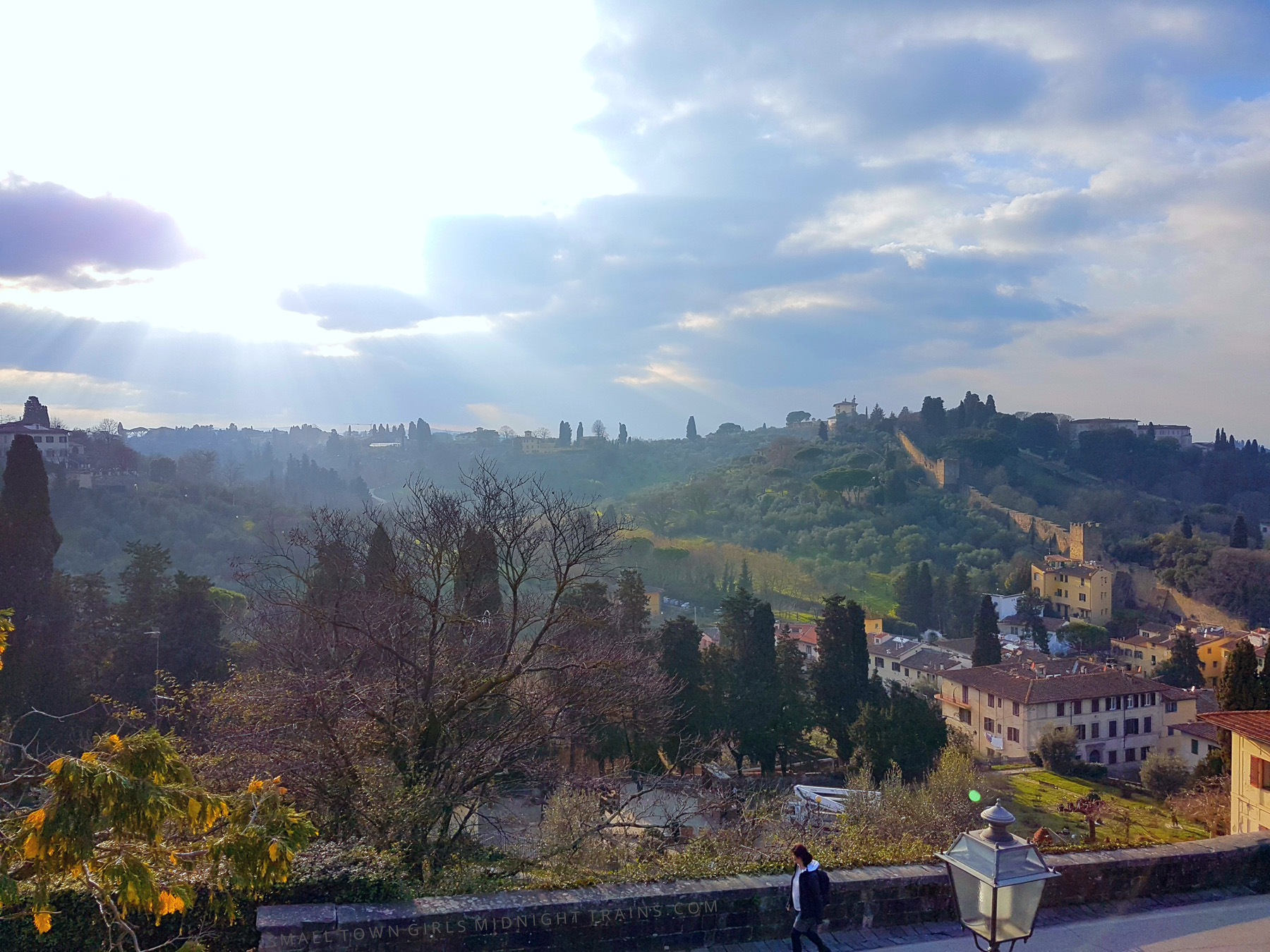
–
I visited the abbey on my very first day in Florence — I literally just set my bags down at the hostel then quickly caught a bus up — hoping to hear the monks’ Gregorian chanting. I’d read from travel sites that the monks celebrated Mass every day, followed by Vespers, and there was Gregorian chanting involved in one or the other. But for some reason there was no chanting when I was there: perhaps it was just bad timing or perhaps, I thought, the monks had simply grown tired of their prayers being treated like a mere attraction by tourists.*
But no matter. The abbey is worth a contemplative visit, with or without the chanting.
–
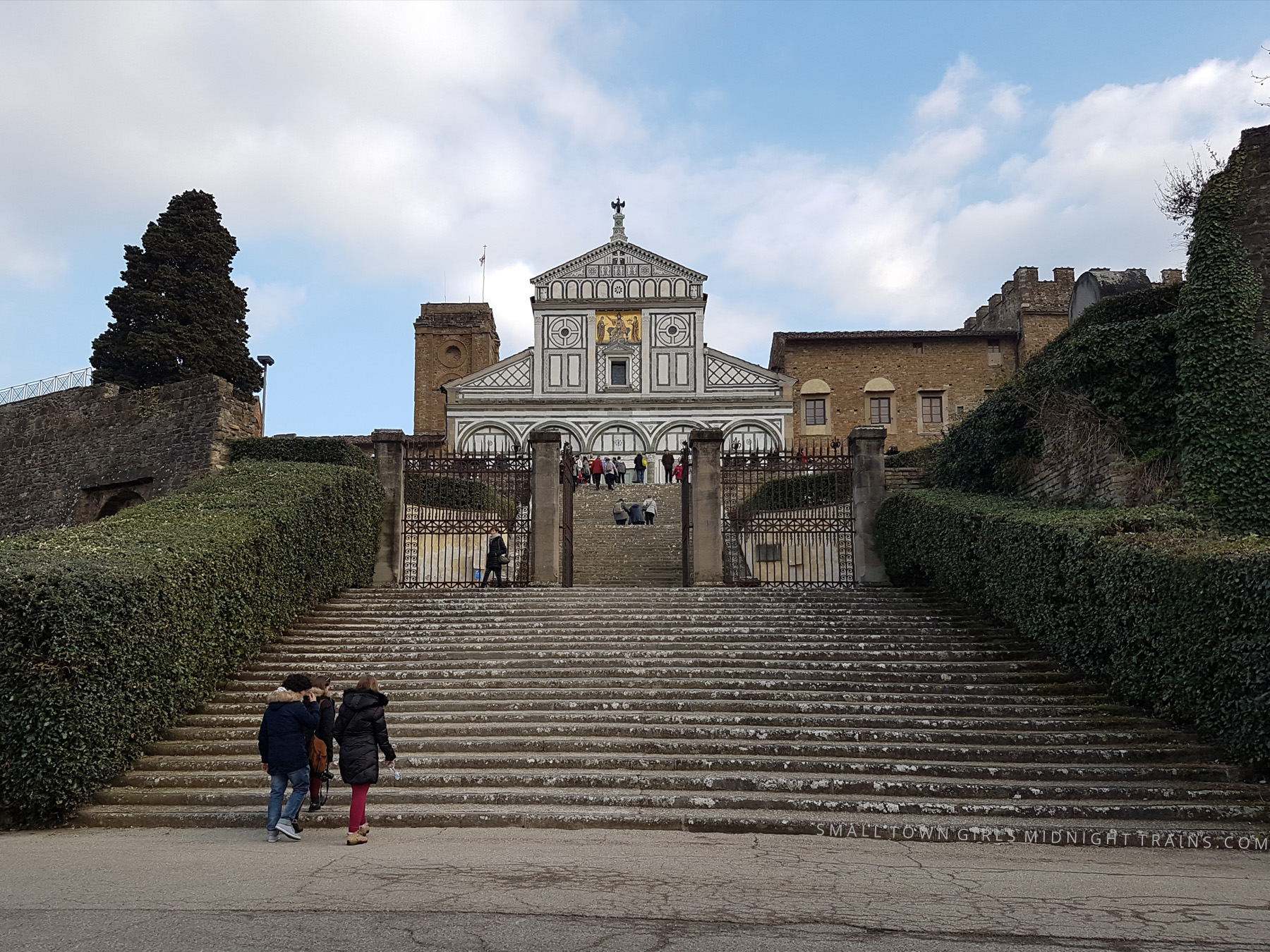
–
It’s beautiful, first of all. San Miniato is said to be one of the finest examples of Florentine Romanesque architecture, with a charming green-and-white geometrically patterned marble façade. There’s a cluster of graves out front and a larger cemetery inside the fortress-like walls, accessible through a door beside the church. The interiors are kept dark but whatever light available reveals art and design made even more striking by their juxtaposition with rough walls and unadorned bare benches.
–
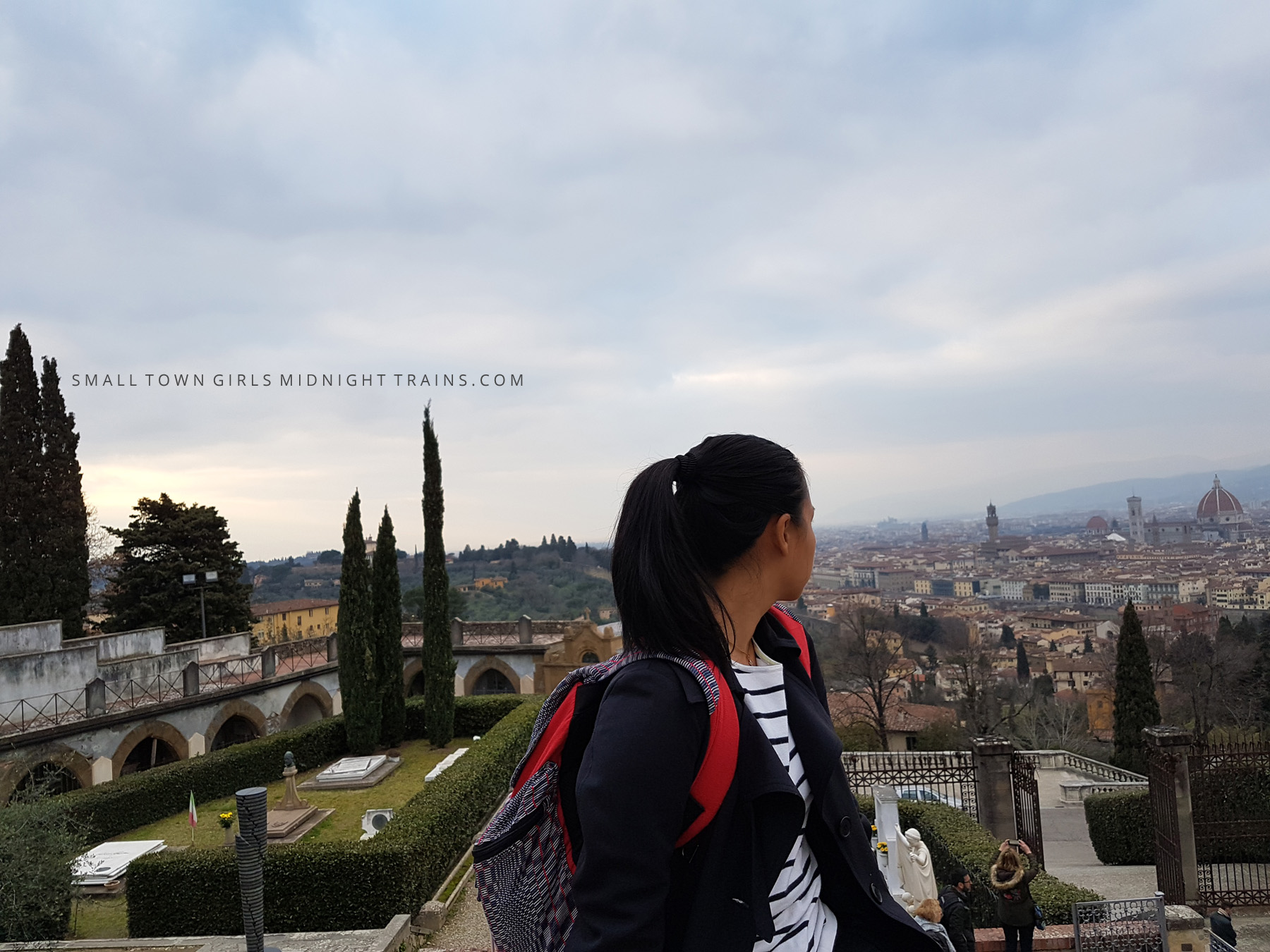
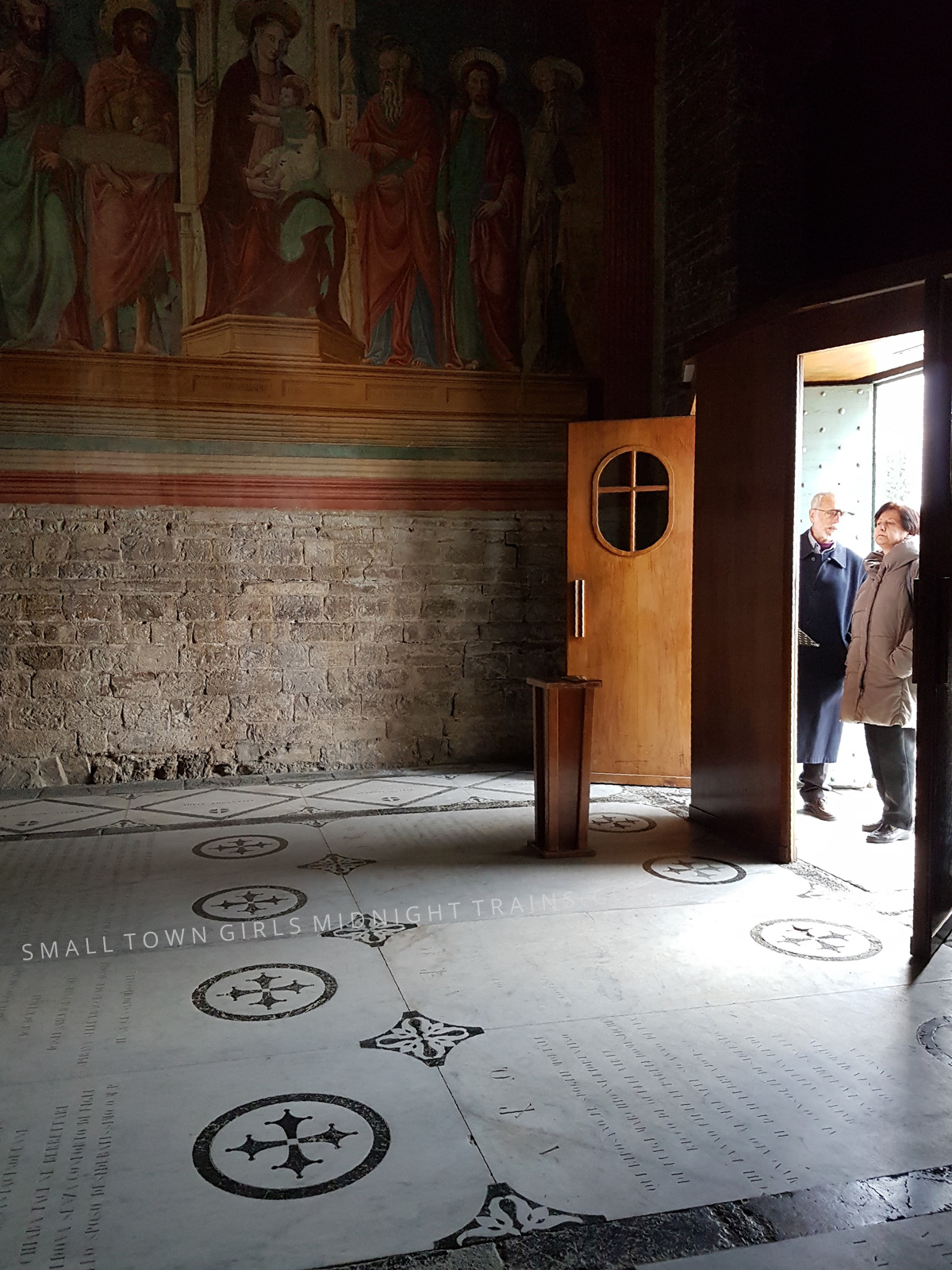
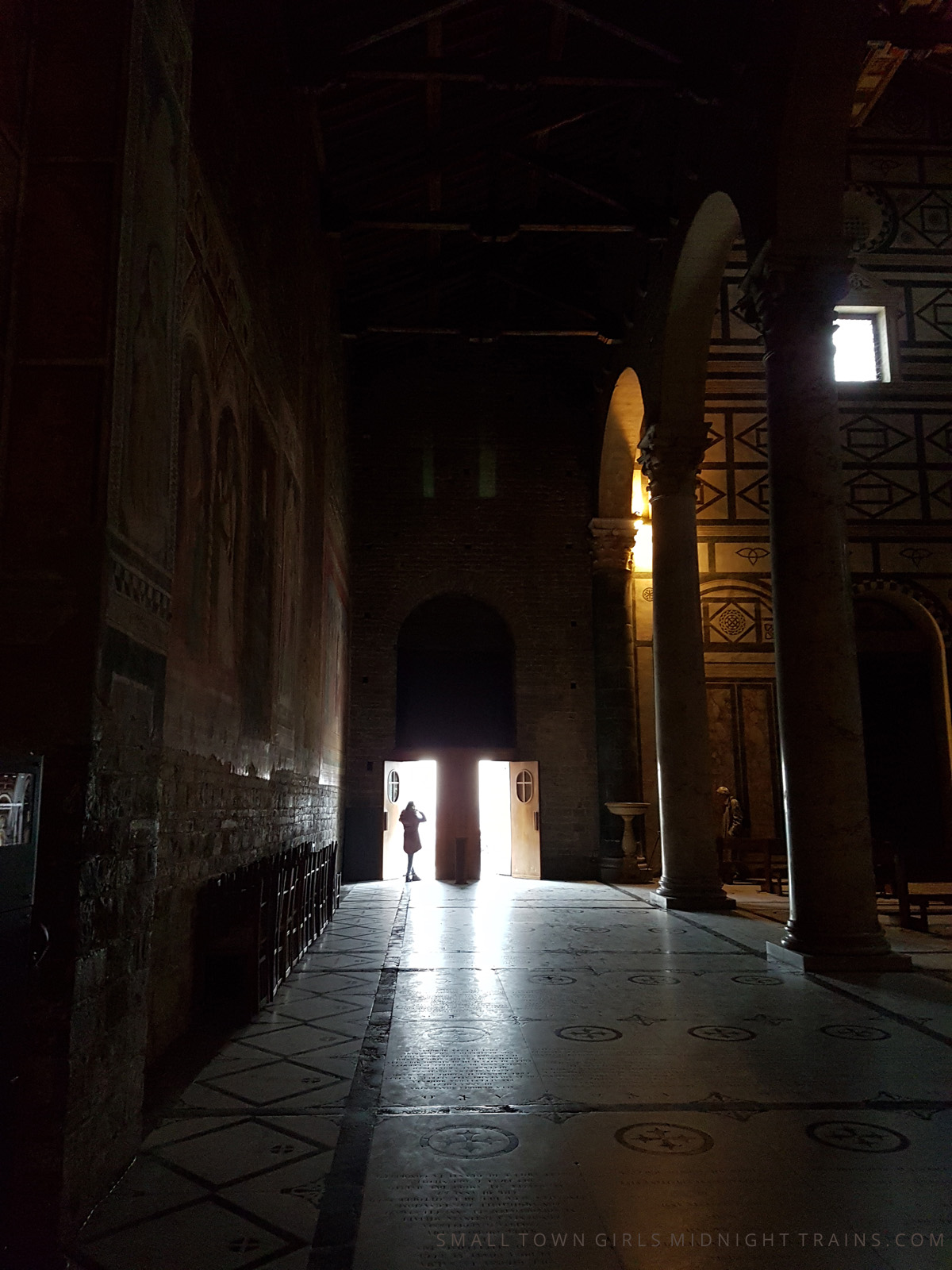
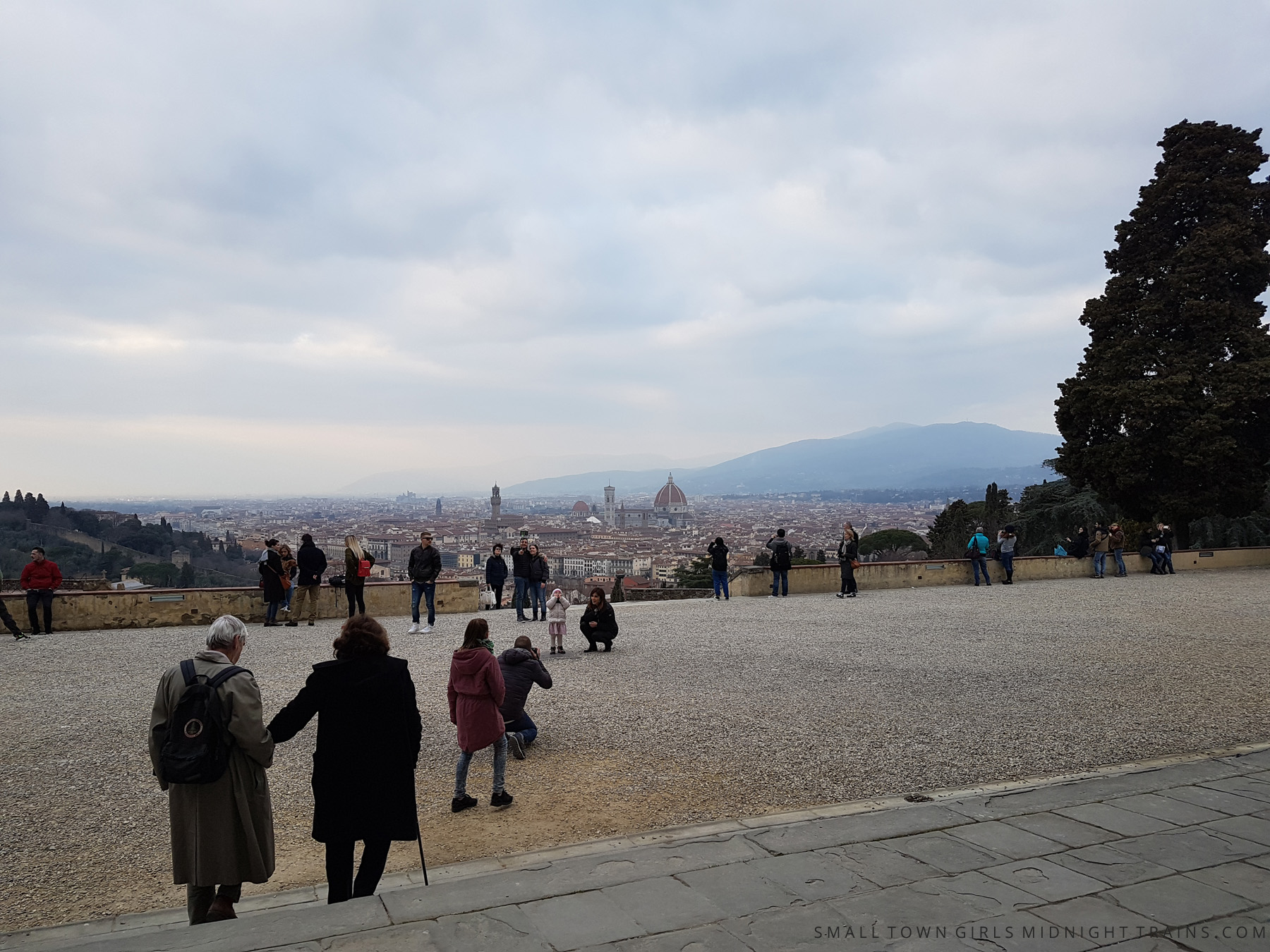
–
There were quite a few people out there that day; at one point, there even seemed to be a small art class sketching the Florentine skyline from the front steps. But it was at twilight — just when I’d finally given up hope of hearing Gregorian chants and had actually started walking down the hill before some instinct made me go back — that a large group of people came in. It turned out they were French pilgrims (or at least they were from France, and on a pilgrimage, I would guess, judging from the presence of a tour leader and a disproportionately greater number of priests than might ordinarily be present in a regular tour group). It turned out, too, that the monks at the abbey were about to start their Mass at the crypt below the church, and after a short conference with the visiting priests, the latter were invited to concelebrate, while their flock cheerfully took their seats at the wooden benches.
I had also decided to attend the Mass and sat down beside a French nun. She noticed I was keeping to the edge of the bench and with a smile and a beckon, she urged me to come closer to her, sit more comfortably, and squeezed my hand when I did.
Most of the monks at the abbey were advanced in years — one sat hunched, head bowed, in his chair and kept so still I wasn’t sure he could move — but the main celebrant at the Mass was quite young. Before starting the ceremony, he addressed the pilgrims, speaking in French at first. I could just make out some of the words: he said his French was nonexistent and he asked the congregation’s leave to use Italian thereafter, with one of the French priests translating. His French actually was not non-existent, and as he gave a brief history of the abbey, he sometimes spoke in French, prompting his translator to joke if he would like that bit translated to Italian instead.
At one point, they asked for a show of hands. Who were French? Who were Italian? Most were one or the other. They didn’t ask who were Filipino — nor did I expect it — but I found out later I was not my country’s sole representative. During Peace, I saw that one of the nuns from the French group was actually Filipino, and we gave each other that smile of mutual recognition. I tried to find her after the Mass — I had a pack of Cebu dried mangoes in my bag that I wanted to give her to remind her of home — but she had disappeared.
And so I had my sought-after dose of singing, after all. The lead priest’s voice was soaring, beautiful, as he sung his parts of the Mass; heavenly, too, was the voice of the lady who did the readings and led us through the songs. And as I sat there in the dark crypt with strangers I could barely understand, I thought that indeed this was the way of the world: some things were meant to be, and some things were not, and some things unexpectedly prove to be just as good or better.
–

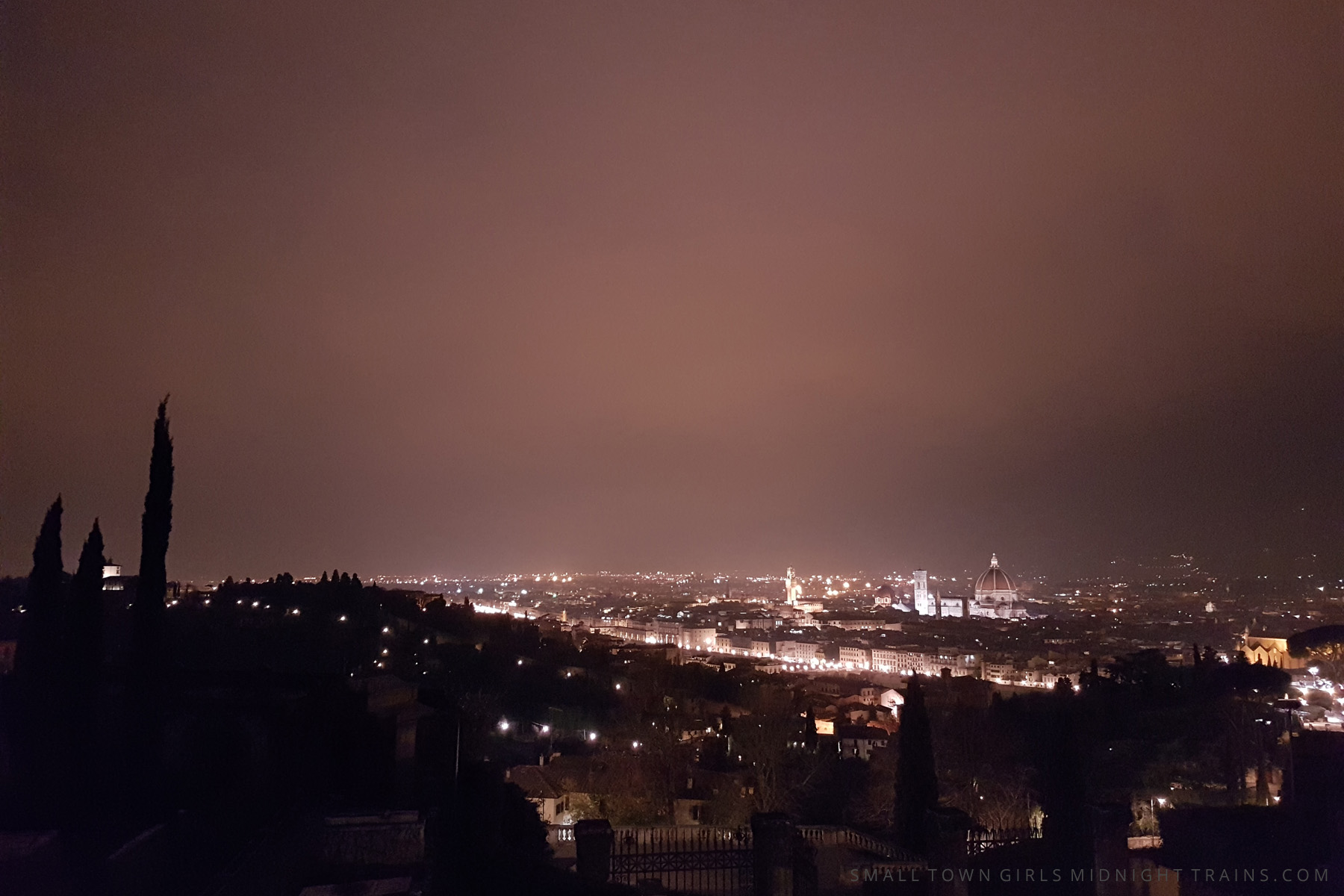
–
* Subsequent visitors have reported that the chanting continues — during Vespers after Mass — so perhaps I just left too early.
*
*

Oh what a lovely post, and what a wonderful experience! I’m not Catholic, nor even Cristian, yet I love all the different ways of devotion around the world. We are all the same, we just have many different ways of connecting with the sacred.
Alison
Thanks Alison! I think you’re right…just different paths up a mountain, same peak.